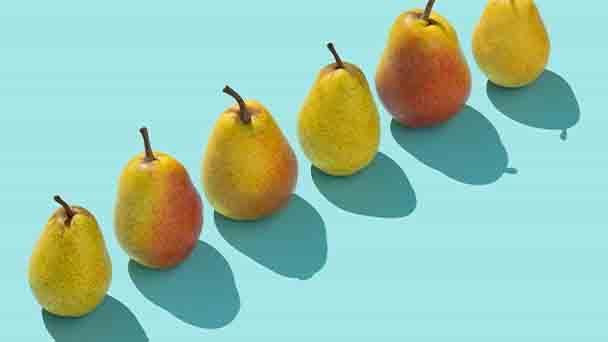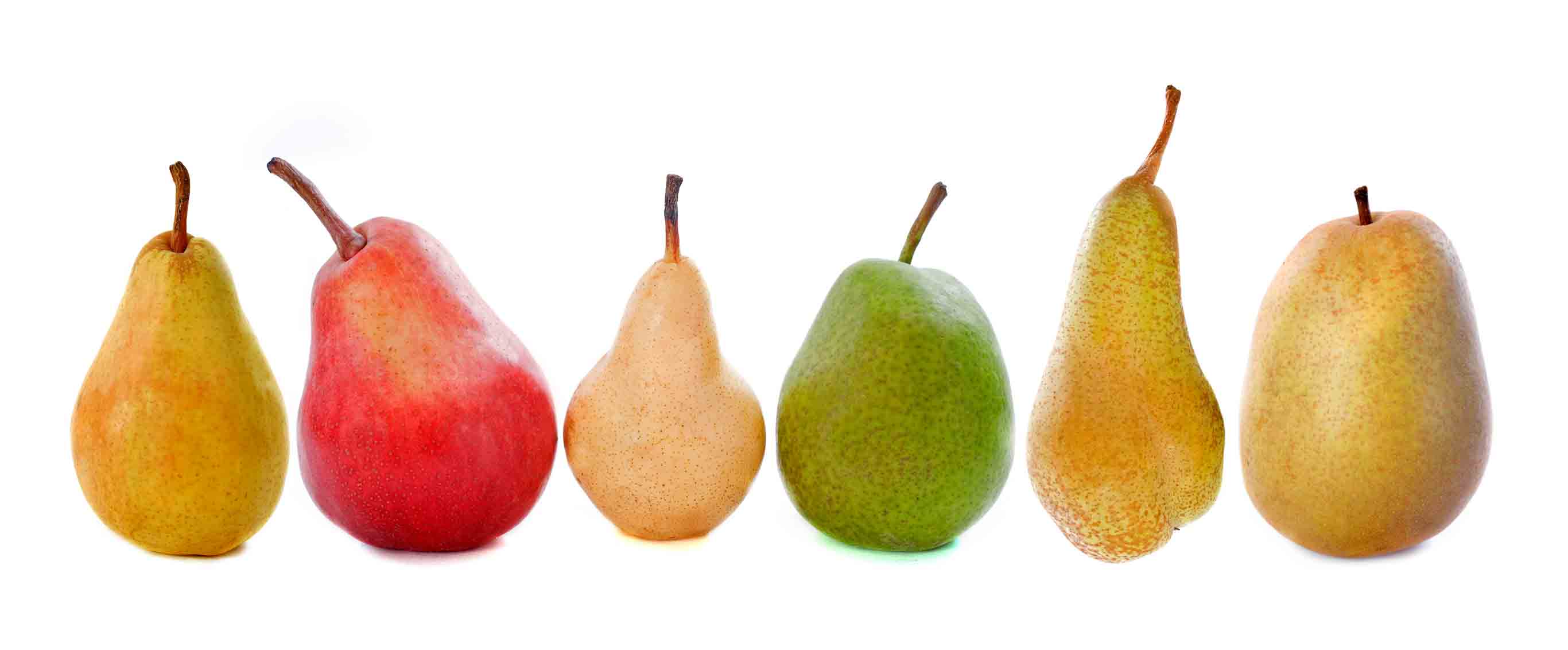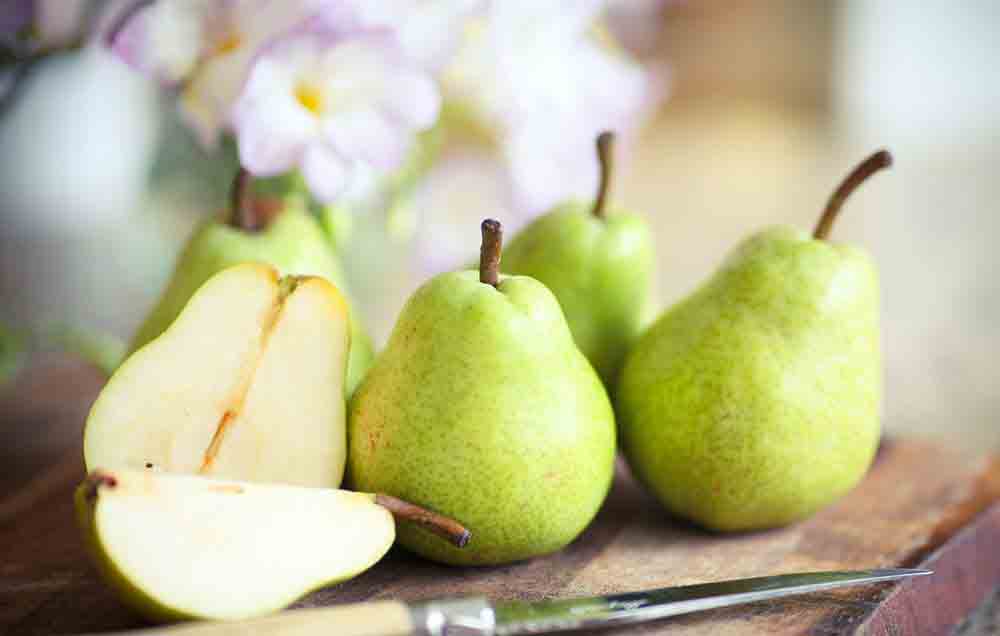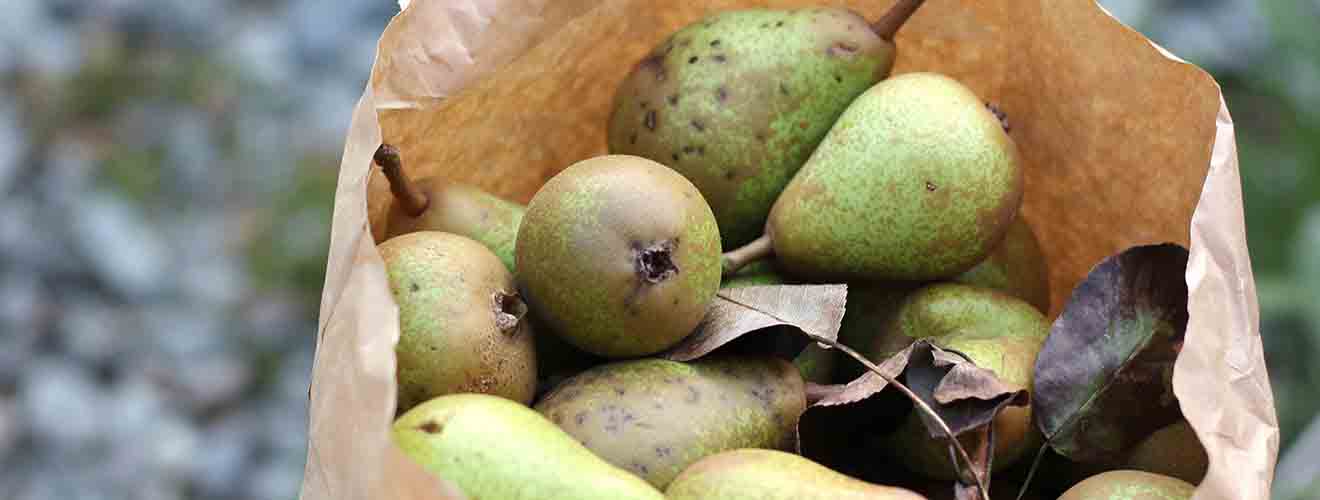Pear Profile
Written by Joy
Nov 06 2020

Pears are characterized by strong fragrance, thin skin, fine meat, juicy, sweet and crisp, refreshing and delicious.
Pear morphological characteristicsRootFlowerFruitPear growth habit and growing environment and distributionPear efficacy and rolePear cultivationNurseryFertilize
Pears have a variety of functions, including protecting the heart, reducing fatigue, enhancing myocardial activity, and lowering blood pressure. In addition, the glycosides and tannins contained in pears can expectorant and relieve cough. Reduce heat and heat, nourish yin and nourish people.
Pear morphological characteristics
Root
Pear has a well-developed root system, the vertical root depth can reach more than 2-3m, and the horizontal root distribution is wide, about twice the crown width. It is advisable to choose a gentle slope mountain with deep soil layer and good drainage, especially sandy loam mountainous land is ideal. Strong dryness and obvious layering. The fruit is early and the fruiting period is long. Some varieties begin to bear fruit in 2-3 years, and the fruiting period can be maintained for more than 50 years.Flower

Fruit
A few varieties of flowers and leaves open at the same time or first spread the leaves and then bloom. After the pollen is fertilized, the fruit begins to develop, the receptacle develops into the flesh, the ovary develops into the core, and the ovule develops into the seed.In the process of fruit growth and development, the early stage is mainly cell division and tissue differentiation, and the later stage is cell expansion and pulp ripening. The fruit volume growth curve is S-shaped. Pear root system growth has two growth peaks each year: the first growth peak occurs when new shoots stop growing; the second peak occurs from September to October. Under suitable conditions, the pear root system can grow annually without a dormant period.
Pear growth habit and growing environment and distribution

Pear efficacy and role
Pears are not only fresh, sweet and delicious, crispy and juicy but also rich in nutrients. Pears have the effects of reducing fire, clearing the heart, moisturizing the lungs, resolving phlegm, relieving cough, reducing fever, detoxifying ulcers, and alcohol poisoning. Regular eating can supplement the body's nutrition. Pears are especially suitable for patients with hepatitis, tuberculosis, constipation, acute and chronic bronchitis, upper respiratory tract infection, high blood pressure, heart disease and esophageal cancer.Pears contain a variety of vitamins, potassium and calcium, which have the effects of lowering blood pressure, clearing away heat, sedation and diuresis, and have a certain therapeutic effect on hypertension, dizziness and tinnitus accompanied by heart disease. Pears eaten raw can relieve symptoms of yin deficiency caused by upper respiratory tract infections such as dry and itchy throat, dry cough, polydipsia, and hot flashes. Therefore, teachers, announcers and singers often eat pears to protect their throats and prevent laryngeal cancer, lung cancer and nasopharyngeal cancer. When eating pears, it is best to chew them slowly so that they can be absorbed by the stomach.
Pear cultivation

Pear trees have a long lifespan and a long economic use period. There are many large trees born between 100 and 150 years old in the pear regions of North and South China, and the branches and leaves are luxuriant, and the fruits are numerous. Some plants can yield more than 1,000 to 1,500 kg. Grafting methods are often used for seedling reproduction. Commonly used rootstocks are du pear, sorbus, bean pear, and sand pear. Dwarf cultivation of pear trees is an important method for the intensive cultivation of fruit trees. For production, the dwarf anvil is better selected from Yunnan quince, which has the characteristics of high cutting survival rate and strong dwarfing effect; Chinese scientific and technological workers are selected and bred The K series rootstocks such as K31.K9.K13.K21.K28 all show dwarfing or semi-dwarfing characteristics, strong compatibility with various pear varieties, good grafting healing, and rooting ability.
Most varieties of pear trees do not bear self-flowering. Even though some varieties have a certain self-pollination ability to bear fruit, cross-pollination can produce better fruit. Therefore, pear orchards must configure good pollination combinations and sufficient pollination numbers.
Nursery

Spring and winter are the best seasons for planting and raising seedlings of pear trees. The planting and seedling of pear trees are generally carried out using drilling.
2. Cutting seedling technology
Cutting seedlings of pear trees are mainly carried out in summer. In summer, the temperature in southern my country is relatively high. Therefore, cutting seedlings of pear trees should be selected in the cool morning to ensure that the pear seedlings and the water contained in the soil will not be lost due to evaporation. . When cultivating pear seedlings, select branches with better wood and close to maturity, and ensure that the branches are not eroded by pests. When cutting pear seedlings, the distance of each seedling should be kept at about 10 cm, and the moisture of the seedlings and suitable light should be ensured. The cut pear seedlings will take root and sprout in about a month and a half. Before they take root and sprout, they should be watered regularly to ensure their normal growth.
Fertilize
Scientific fertilization and formula fertilization are some of the important measures for pear trees to obtain high and stable yields. The current pear orchard soil is generally deficient in nitrogen, followed by deficient phosphorus and some trace elements. Besides, fertilization management should be carried out according to the different periods of tree age and the different growth characteristics of each period.The early stage of pear growth is the period of germination, branching, leaf spreading, flowering, and fruit set. During this period, a large amount of nitrogen fertilizer is required, and the application of nitrogen fertilizer should be strengthened at this time. The fruiting period and the fruit-bearing period are important periods of fertilization, and a large amount of fertilizer is required, especially the application of potassium fertilizer during the fruit expansion period. More than 80% of the potassium fertilizer is absorbed during this period.
Latest Updated
- Benefits of Bugleweed - 7 Science-backed Health Benefits
- Bugleweed Dangers & Side Effects - Is It Poisonous?
- How to Plant Evergreen Trees - What You Should Know
- When to Plant Evergreens - Grow Guide for Evergreen Trees
- 12 Wonderful Evergreen Shrubs for Your Garden
- 12 Popular Evergreen Plants with Pictures for Beginners
- When And How To Prune A Lilac Bush Like a Pro
- How to Grow & Care for Lilac Vine (Hardenbergia Violacea)
- Japanese Lilac Tree (Syringa Reticulata) Care & Propagation Guide
- Shumard Oak Pros and Cons - What to Know
Popular Articles
- Winter maintenance of Antirrhinum Majus
- How to Grow Terminalia Mantaly Tree
- How to Grow and Care for Crossostephium Chinense
- How to grow Antirrhinum Majus in spring
- Peristeria Elata (Dove Orchid) Profile: Info & Care Guide
- Underwatered Snake Plant (Sansevieria Trifasciata) - Signs And How To Fix
- How to Care for Brazilian Jasmine Plant (Mandevilla Sanderi)
- How to Grow & Care for Graptopetalum Purple Delight in Summer
- Rosa Chinensis (China Rose): Plant Growing & Care Tips
- How to Care for Baby Sun Rose (Aptenia Cordifolia)